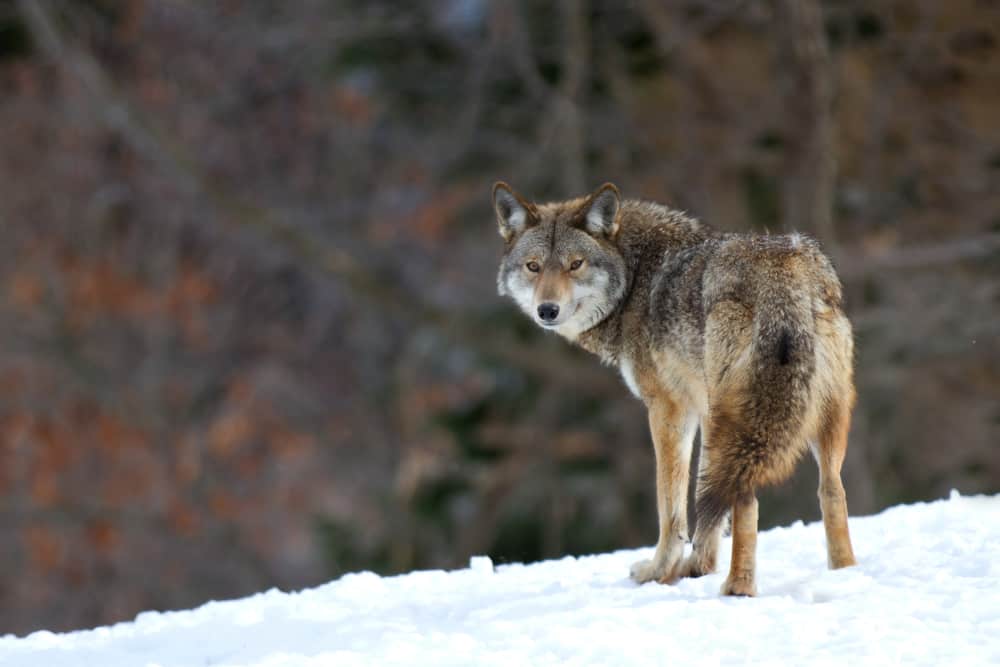
Coyotes and wolves are close relatives (in the dog family), and there are many similarities between the two animals. It is hard to decide which animal it is that you see or hear; or, which animal’s tracks you are seeing. But they are very different. So how are they different?
Wolves and coyotes are different in size, in the sounds they make, their habits, their habitats, their diets, and even their attitude towards the human being! Wolves have only half the life expectancy of coyotes and a mortality rate of 60% among pups.
To be honest, I knew nothing of either of these two animals when I became interested in knowing more about them. And I was surprised to discover how truly fascinating – and very different – coyotes and wolves are!
Table of Contents
- 1. Coyote vs. Wolf: Physical Appearance
- 2. Coyote vs. Wolf: Sounds
- 3. Coyote vs. Wolf: Habitat and Diet
- 4. Coyote vs. Wolf: Packs
- 5. Coyote vs. Wolf: Other Differences
- Conclusion
1. Coyote vs. Wolf: Physical Appearance
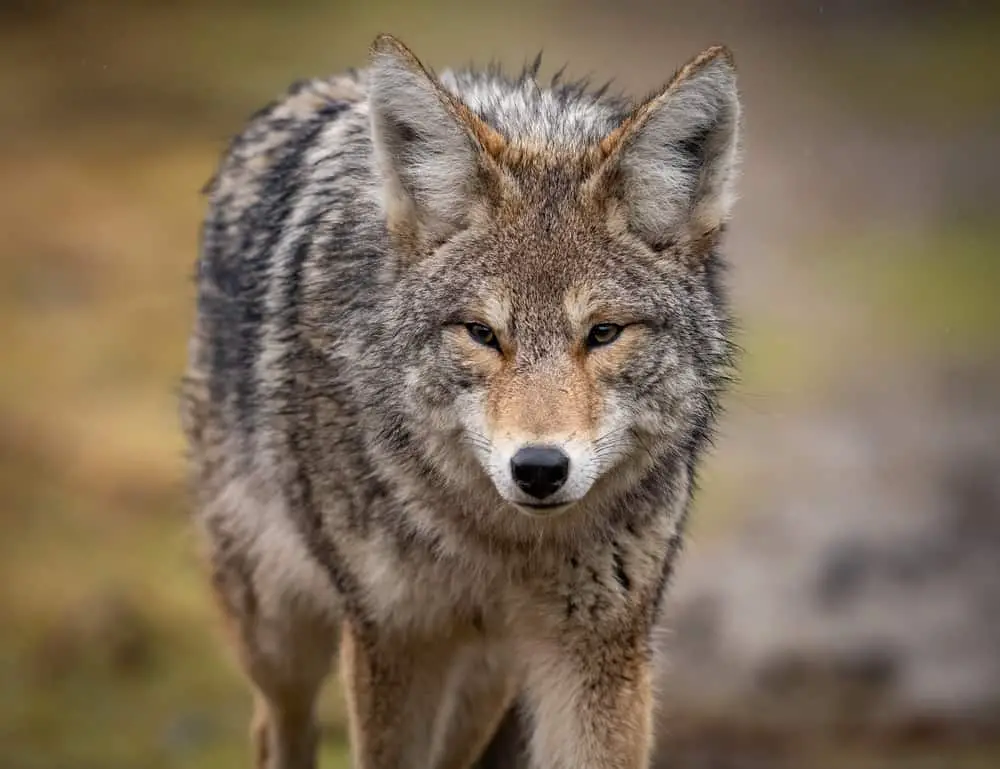
The most obvious differences between coyotes and wolves are in their physical appearance.
To start with, coyotes are about half the size of wolves. They weigh about 25 to 45 pounds, while grey wolves typically weigh between 50 and 100 pounds. In addition to this, coyotes appear to be more nimble and streamlined.
Another way to tell the difference is to compare the muzzles, legs, feet, and ears. Coyotes have pointed muzzles, long and pointed ears, while their legs and feet are normal sizes – or a size that you would expect if you looked at the overall appearance.
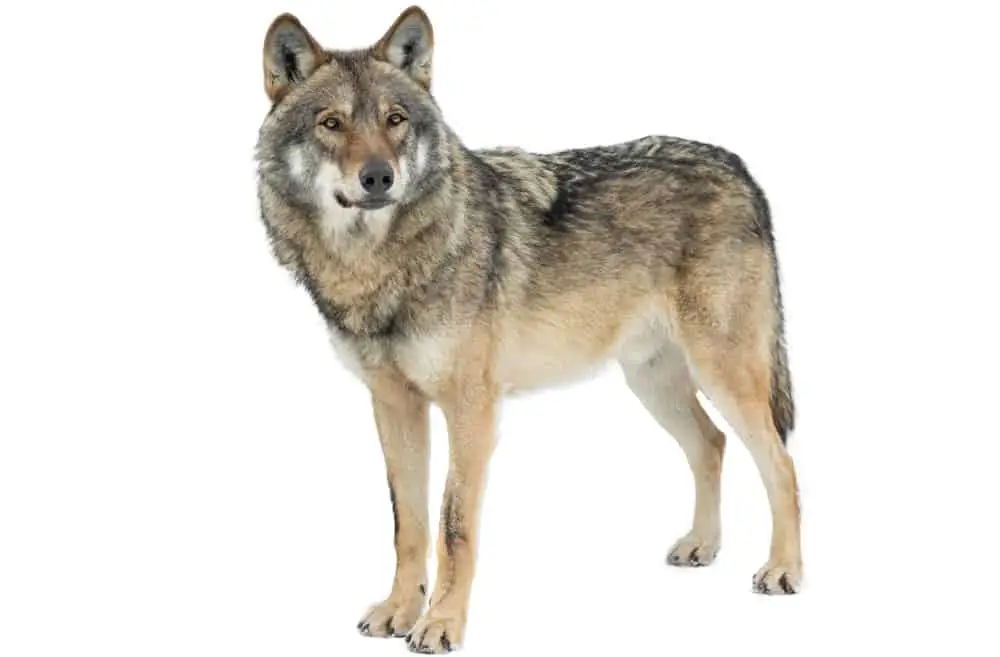
Wolves, on the other hand, have squared muzzles, rounded and short ears, very long legs, and oversized feet.
Because of the difference in the size of their feet, the paw prints of coyotes are smaller than that of wolves. If the size of prints approaches the size of a human hand, wolves in all probability made it.
As for their fur, coyotes tend to be brown and pale yellow, while wolves fall into two broader categories; grey wolves tend to have grey – but more often than not – dark grey to black hair. The red wolves have reddish-brown fur with whitish patches.
2. Coyote vs. Wolf: Sounds
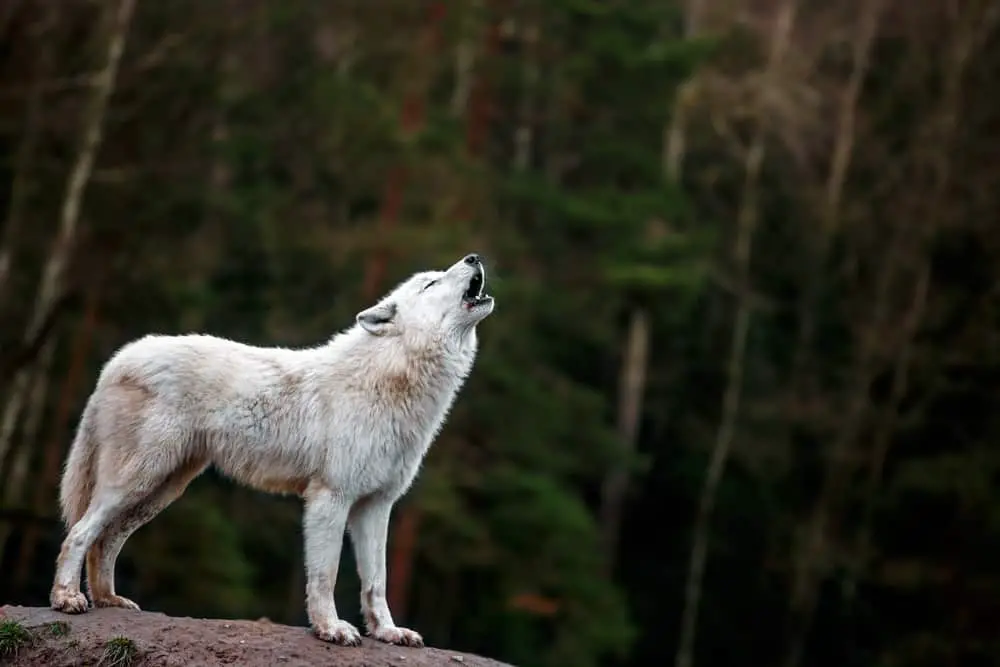
One of the easiest ways to distinguish between coyotes and wolves is to compare the sounds that they make. So, without actually seeing the one you may already form a good idea of which animal it is that you have to do with.
Coyotes make high-pitched howls, barks, and yelps, while wolves do not pitch as high – in fact, quite a lower howl, bark, and yelp.
Wolves have howls that are at times melodious or harmonic and may even pass through a full musical octave.
3. Coyote vs. Wolf: Habitat and Diet
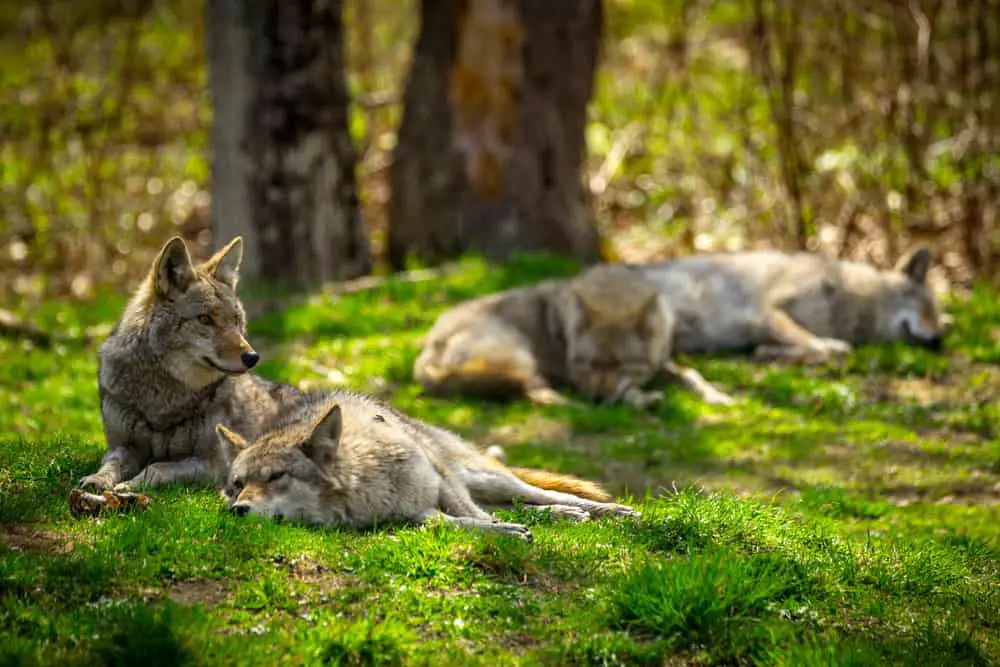
It is also possible to tell the difference based on the habitat of coyotes and wolves, as well as their diets.
Coyotes are more at home with human beings. While they are prairie natives, they are often found in suburbs and urban environments (and also in forests and meadows). They have come to see the human environment as a constant food source.
Wolves do not have the same attitude towards human beings. They prefer to stay in the forest environment.
Apart from their different predisposition towards habitat, very marked differences can be observed in their diets.
As one would expect, coyotes are carnivores that feed on smaller animals like rats, mice, and rabbits. But they also thrive on fruit, vegetation, and even insects. Unlike coyotes, wolves (especially grey wolves) see smaller animals as their secondary food source.
As a primary food source, wolves prey on large hooved animals (elk, moose, deer, and similar animals). They are also known to feed on already killed domestic animals.
So, both in terms of habitat and diet coyotes and wolves are very different.
4. Coyote vs. Wolf: Packs
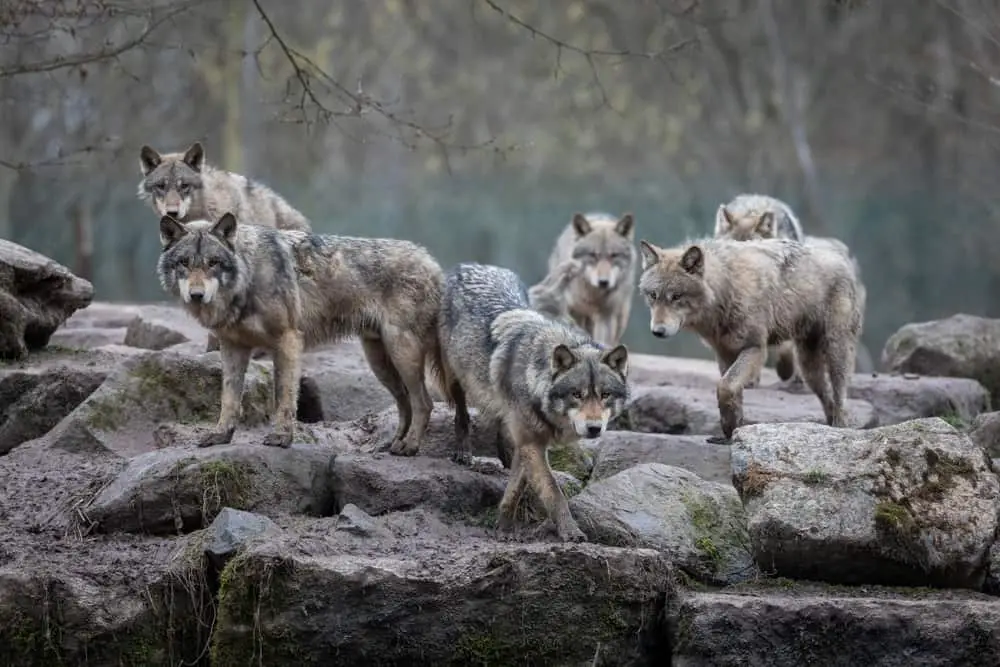
Both animals congregate in packs as the basis of their social structure. But when it comes to hunting, coyotes prefer to hunt alone because they hunt smaller animals. Coyotes tend to gather in bigger packs than wolves.
Wolves – as opposed to coyotes – hunt in packs because they prefer hunting the large, hooved animals. While the packs are smaller than coyote packs, they are organized in a strictly hierarchical fashion led by an alpha male and his partner. The pack raises the pups together.
5. Coyote vs. Wolf: Other Differences
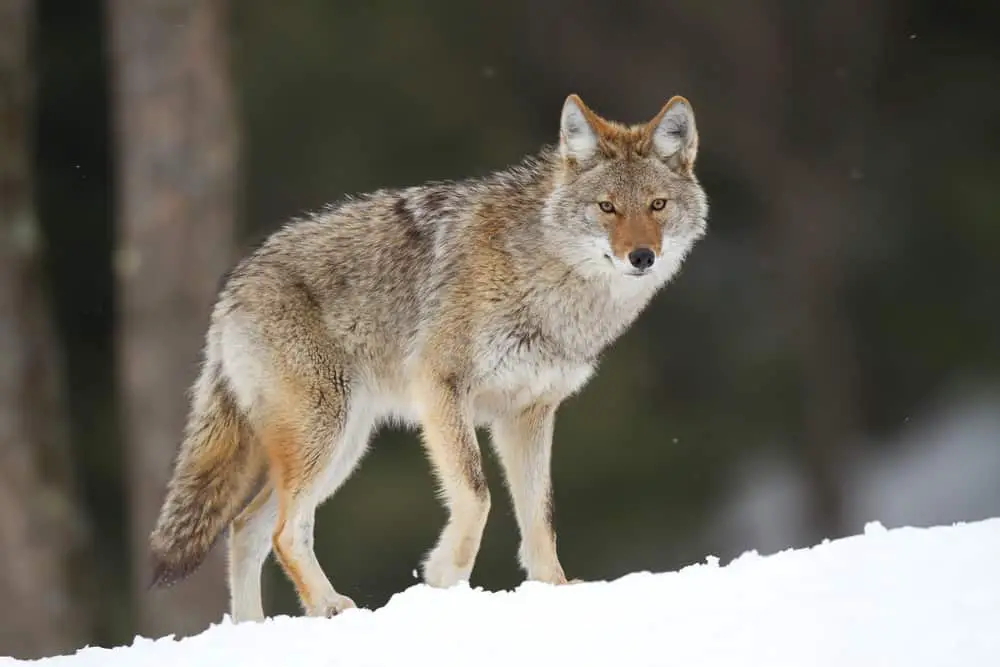
One other area to note is the difference in life expectancy.
Coyotes are not endangered species. They can survive 10-15 years in the wild. The oldest recorded case is an alpha female that reached the age of 11 years. Their general mortality rate is not all that low, though. Most die before they reach the age of 3 years.
Wolves, on the other hand, can survive only around 8 years in the wild; common causes of death include starvation and mortal injuries resulting from fights.
Mating habits are similar, with only minor differences. Coyotes and wolves both have an average litter size of 4-7 pups.
The scat of coyotes and wolves is very different: coyotes have smaller scat, but it is also different in appearance.
Coyote scat is about an inch in diameter, smooth and shiny. It can contain ungulate hair and the bones of smaller animals. Another characteristic is that the scat tapers towards the end.
Compared to coyotes, wolves have a larger scat (diameter typically one and a half inches). The scat of wolves also tapers towards the end and may contain ungulate hair as well as bone fragments.
The main difference is that scat from wolves is not as smooth and shiny as that of coyotes, but is more cord-like.
Coyotes and wolves have roughly the same gestation period of 62-63 days.
Conclusion
While they are close relatives within the dog family and have many similarities, coyotes and wolves have many differences. Some of these differences are easy to identify, while others are less obvious.
The main differences are in their physical appearance and relate to the shape of the muzzle, the shape and size of the ears, and similar characteristics. They also make different sounds, have a different social structure in a certain sense, prefer different habitats, and have different diets.
They are also different in their attitude towards human beings.



